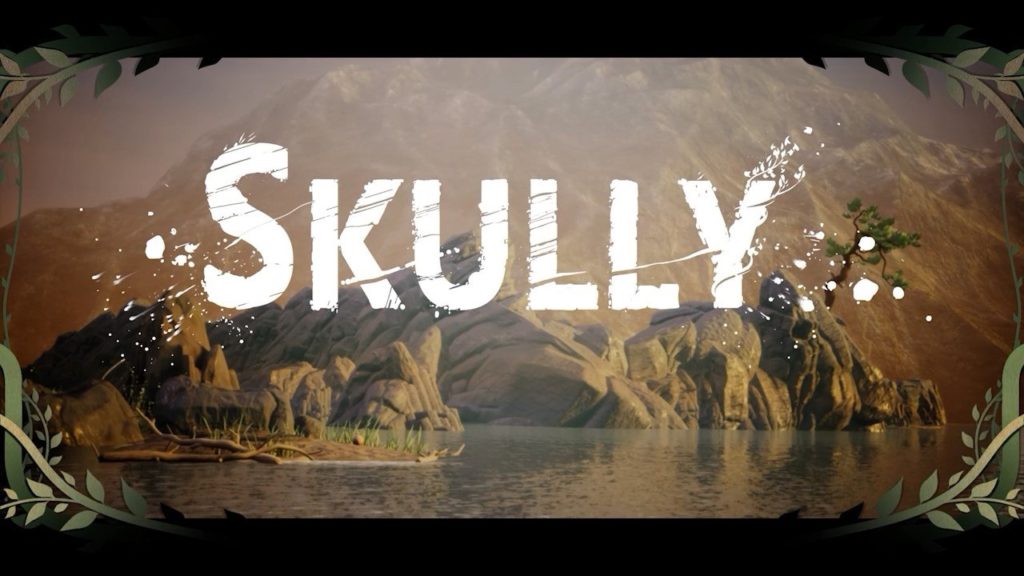
Oh, another game where you play an animated skeleton! Wait, where’s the actual skeleton? Ah crap, I’m just a skull. Skully is the latest creation from Finish Line Games out of Toronto, creators of the weirdly unique Maize. It’s published by Modus Games and is a very retro-feeling combination of platform gaming and physics-based games. In Skully, you play a round, animated skull. An earth deity named, um, Terry (you get it, just cringe and get it over with), has resurrected you, sort of, to help him solve the dispute between him and his siblings. Apparently they’re all sour at each other and he wants to mend fences. So off you roll to deal with the problems of those more powerful than you. If that isn’t a euphemism for the current state of the world, I don’t know what is.
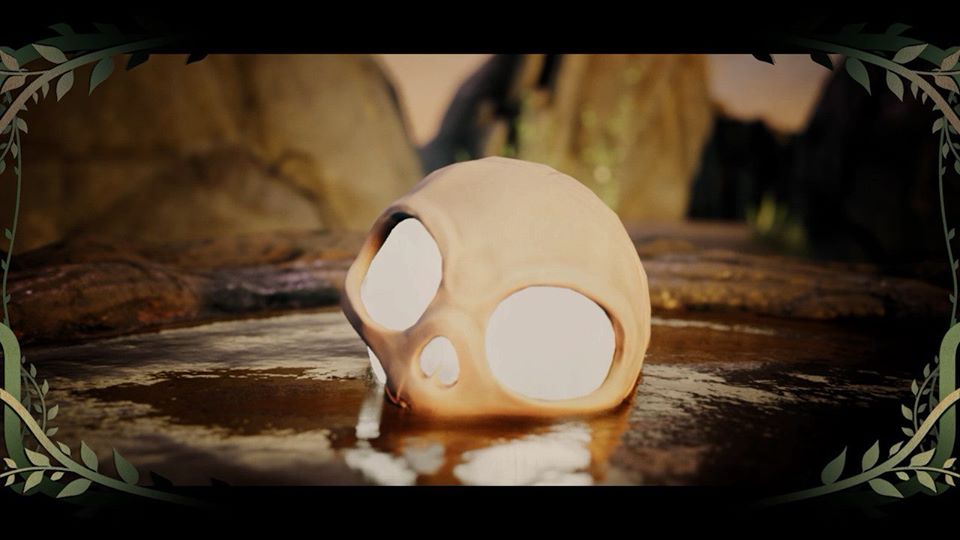
As you roll out (yup, more puns), you’ll find that there’s a lot of fine detail control over Skully. He also builds up momentum and this affects the way in which you can approach puzzles. The closest analogue to Skully’s movement is a game that’s so old you may not have heard of it, Marble Madness. In Marble Madness, you controlled a marble rolling down a series of steps and puzzles to get to and end point. That’s basically how Skully controls, only with the addition of a magical jump too, adding a whole new dimension to puzzle design. It’s challenging to get the hang of, but soon you’ll be flinging yourself up pathways with abandon.
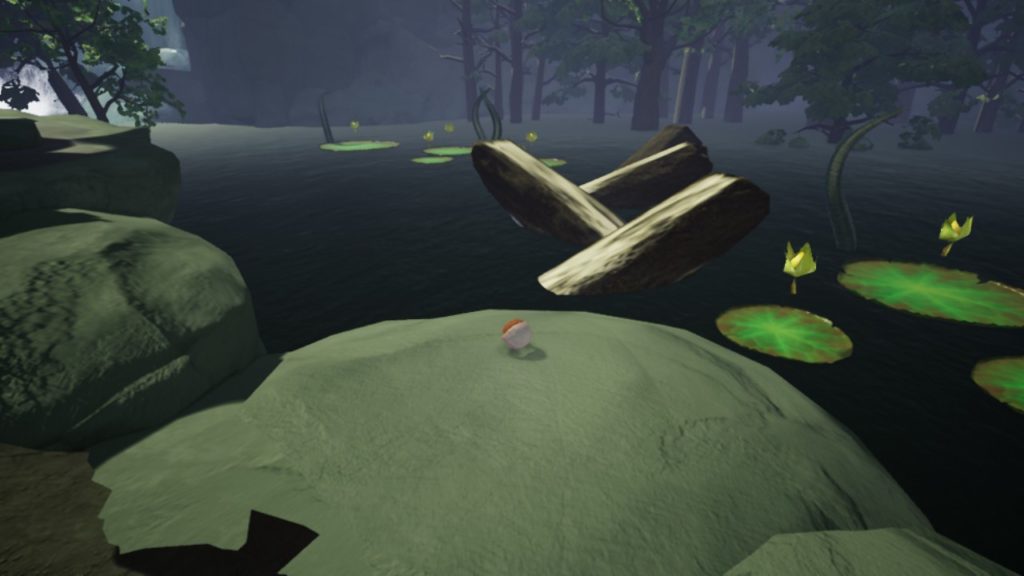
But wait, there’s more! Now how much would you pay?!? Well, in Skully’s case, $30, but hey, who’s counting? Eventually Skully will roll upon some weird glowing pools of mud. Initially they were simply save points, representing the magical clay he’s resurrected from, but they’re also morph points that allow you to turn into a variety of mud forms. These are humanoid forms that give Skully special powers, enabling a host of new, more complex puzzles and changing the physics-based gameplay to something more platform like. Initially, you start with a huge mud creature that can attack enemies and break down walls, but eventually there are several types available, with powers of speed, jumping, moving platforms and more.
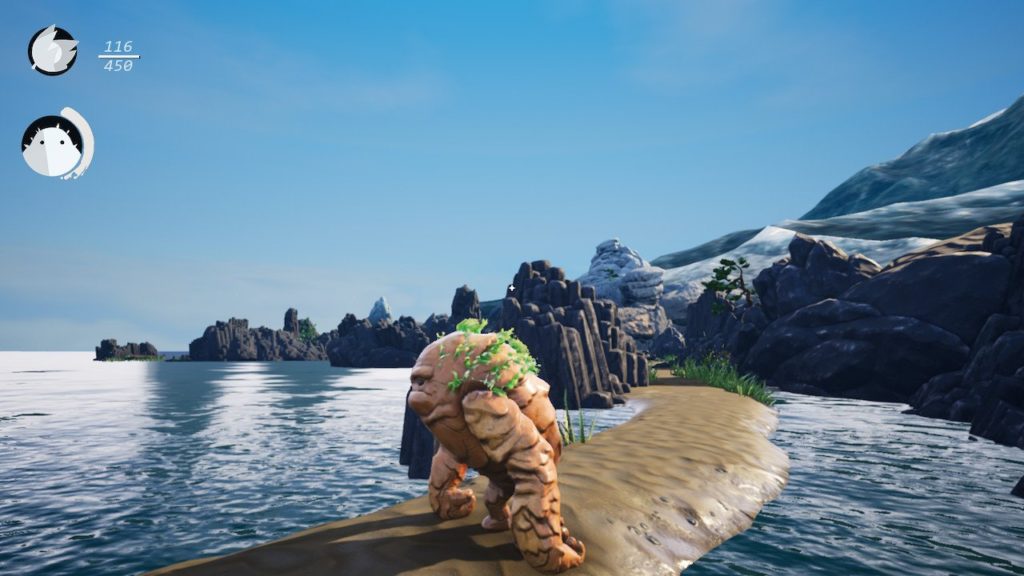
Switching back and forth from Skully to his mud forms is a key formula in the game. Proceeding in the game will require a bit of creative thought and more than a few risks to be taken, especially since the mud forms have extra health and Skully can only take a hit or two at most. And considering the environmental hazards here, that’s a lot of risk. If Skully (or his mud form) falls in water, he dies. If he falls in lava, he incinerates (which is pretty much everything that exists, but hey, whatever). An enemy gets you wet or burns up near you, dead. Fortunately, you have infinite lives, and Skully respawns at the last checkpoint automatically. Sometimes that can be rather far away though, so don’t expect to get off easy every time!
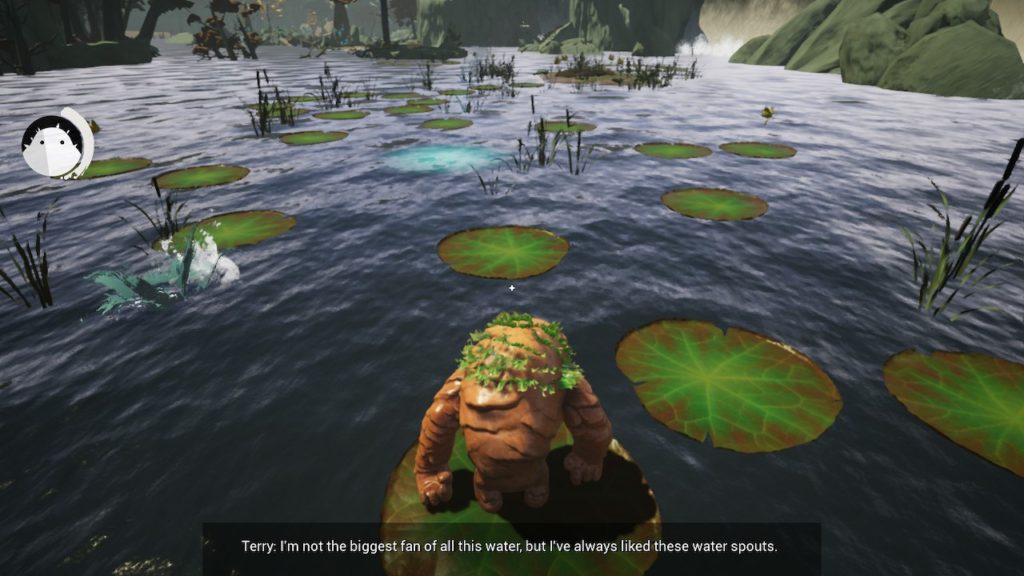
As you progress, you’re also picking up flowers. Each stage has a certain number of yellow flowers to pick up. There’s no apparent reason for this and they make a weird chime sound every single time you grab one. Initially, your impulse will be to grab every flower and max out the meter at the top left of the screen. Unfortunately, there doesn’t seem to be any purpose to this at all, other than unlocking some artwork if you find them all (and good bloody luck with that).

There are boss fights too, or at least a semblance of them. You’ll combat the other siblings, rolling up to smash a couple walls or jumping from platform to platform, but those pale in comparison to the escape stages where you have to fling yourself near blindly down corridors, fleeing from water or lava that will kill you at every turn. These have a very Indiana Jones or Crash Bandicoot feel to them, with a single misstep (or mis-roll) ending in disaster. You’ll be whisked back to a checkpoint to try again, and often it’s incredibly infuriating. One particular lava escape stage (shown below) ended up taking well over a hundred re-tries, and it’s unclear whether that’s a testament to the difficulty of the stage, personal perseverance, or a complete lack of skill).
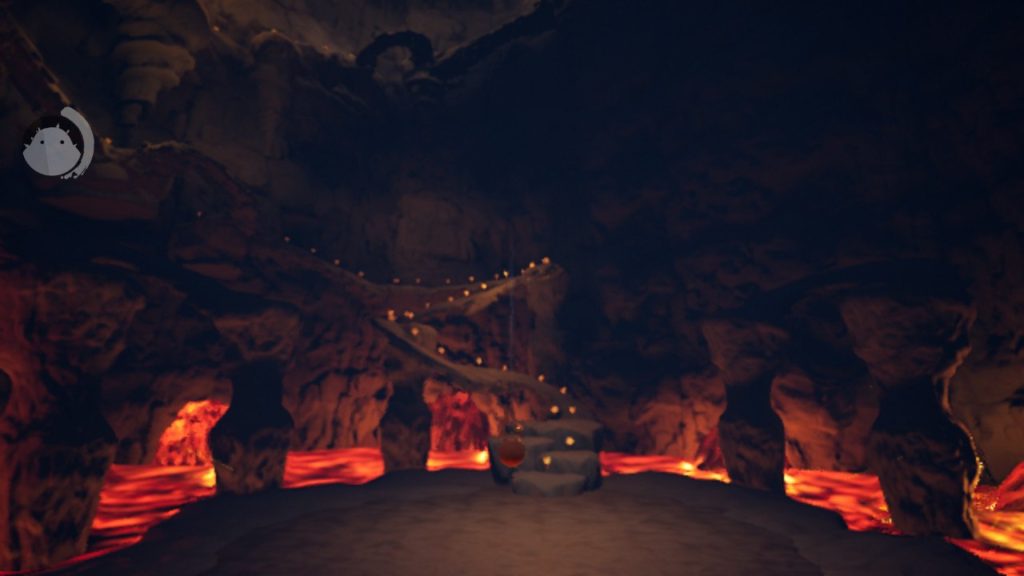
Visually, Skully is a treat. The claymation style is appealing, the levels are gorgeous with lots of fine detail, even on the Switch, and the mud forms are cute and enjoyable. There are plenty of little details here to enjoy, from the heat shimmer off the lava to the crispness of the clay cinema sequences. The game looks good, and looks good in motion, even on the Switch. It’s altogether adorable and definitely one of the best parts of the game.
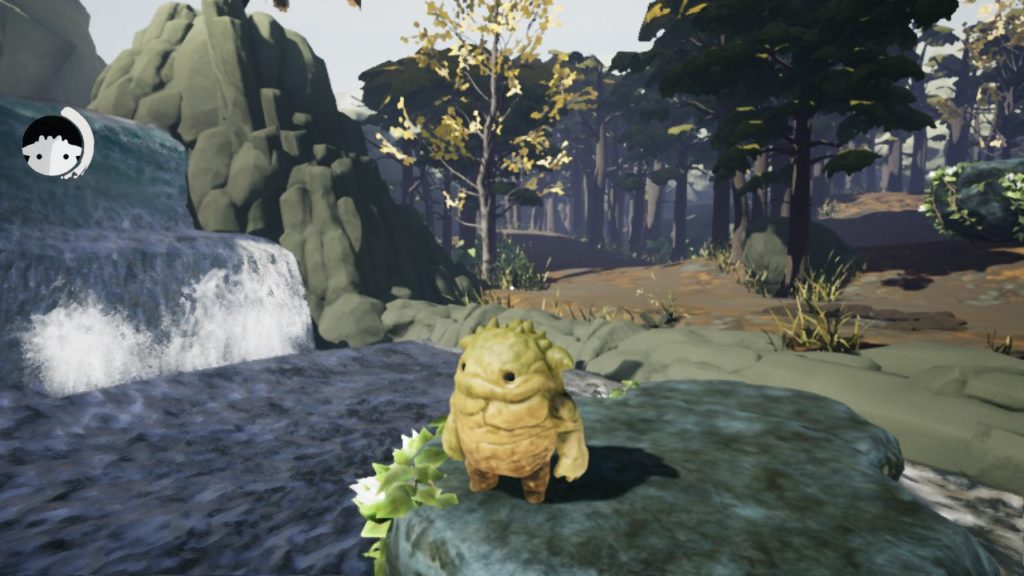
Let’s get into the negatives of Skully now. Irritation is the name of the game here. You have an idea of the physics-based gameplay and the way the game works now, but Skully is surprisingly difficult to control, made more so by the dearth of uneven terrain, slanted platforms over water, lava, endless drops, and bizarre level design. This is a game that’s designed to be a challenge to your skills but presents in such a way that there’s almost no motivation to do well. It’s just frustrating to make the same jump over and over again and die because you slightly mistimed the lilly pad disappearing or hit a groove in the edge of a rock platform.
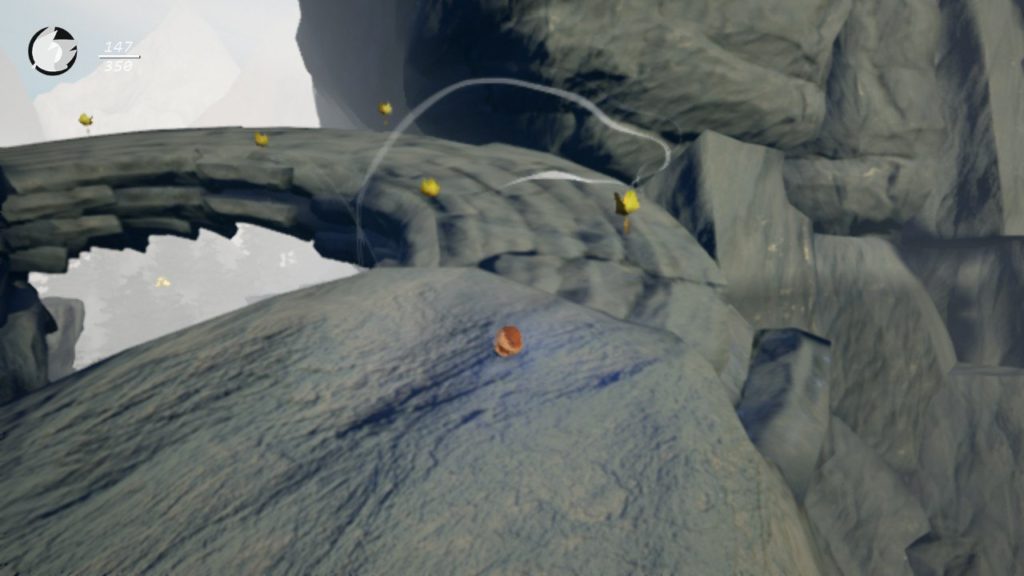
In fact, playing Skully will make you actively look for alternatives to taking the designated paths, and due to the sub-par level design, there are plenty of ways to do that, especially in earlier stages. It turns out that you can just use your mud forms to completely avoid many of the physics puzzles and platform jumping. In early stages, you can simply jump over the rock walls by taking advantage of crevices in the rock face to stand on, bypassing whole sections of levels. As long as you don’t care about flowers (which you won’t…crew those flowers), you not only avoid lengthy jumping sections of the game but almost completely avoid combat as well. At one point, Terry warns you how dangerous some of the enemies are. In the smallest mud form, you can simply run past them at blazing speed and never have to face a single one of them. They don’t even follow you. In fact, there’s almost no need for any combat in the game and it can nearly always be avoided, which begs the question why bother to even include it? There’s a harmless enemy now, in the top left corner, completely unable to attack the little tree mudform!

In some places, you’re forced to abandon your mud form and roll about as Skully to get through a tight passageway, but about a third of the time, you can simply bypass these blocks and walk up areas that are designed to be rolled along, significantly decreasing the challenge (and frustration level) of the game. All of this smacks of poor level design, as do the extremely linear levels that don’t seem to have any purpose other than to collect flowers. Speaking of the flowers, burn them. Burn them all! Not only is it nearly impossible to get every flower due to the way some of the levels play out, but every single one that you collect makes an irritating chiming noise that is incessant in the background of the game. Every. Single. Flower. By the time you’ve made progress in the game, you’ll be trying to actively avoid collecting the damned things, and that’s impossible due to their prominent placement everywhere. There are also larger flower all over that you’re supposed to collect, usually in challenging locations that would significantly lengthen gameplay to acquire, but there’s really no reason to.
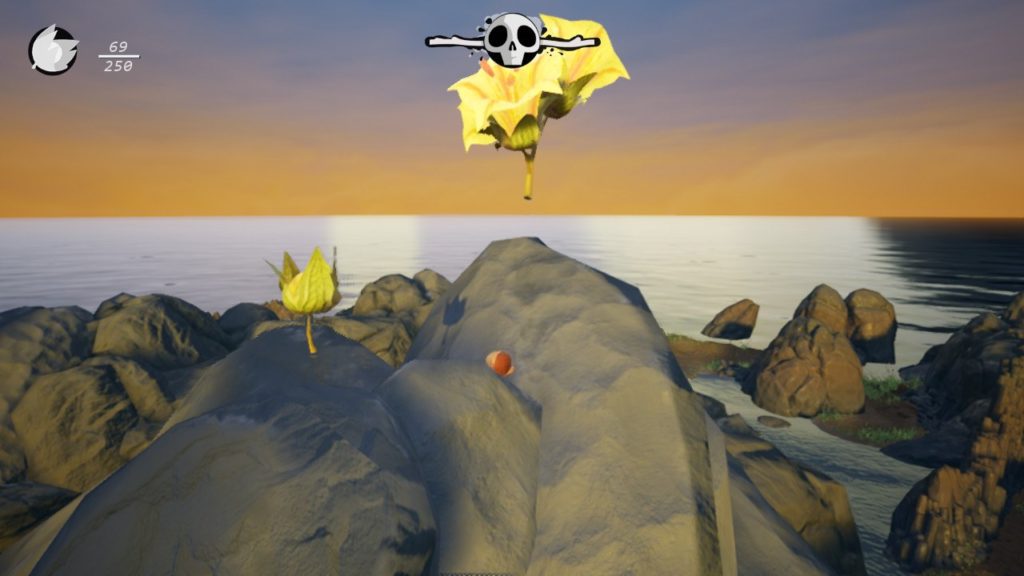
All that wouldn’t be so bad if it wasn’t for the incredibly frustrating manual camera. The camera in Skully is so dated that it wouldn’t feel out of place in a PS2 game. Your right stick controls the camera and control it you must, as it does not follow Skully on its own, notably in challenging rolling areas. Levels move fast, and having the camera lag behind or having to know where to set it to in advance to make certain jumps is insanely difficult, especially while navigating up and around corners with momentum building. There’s a noticeable difference in camera responsiveness between the Joycons and the Switch Pro controller as well, leading to it being much more difficult to play Skully with the Joycons, something that will be frustrating for a lot of gamers. The Switch Pro controller is by far the better choice for this one. You’re still going to end up dying repeatedly as you forget to move your camera or the angle makes it hard to follow. Even in docked mode, the camera angles make things hard and memorization and repetition are mandatory. Plus, the camera can get stuck in walls occasionally. In undocked mode on the Switch, it’s also incredibly hard to see Skully when he’s rolling, especially during the escape levels where he’s a moving speck on the screen, even though they are one of the few types of play that have an automatic camera. See if you can find Skully in the image below. Good luck, especially when the lava gets close!
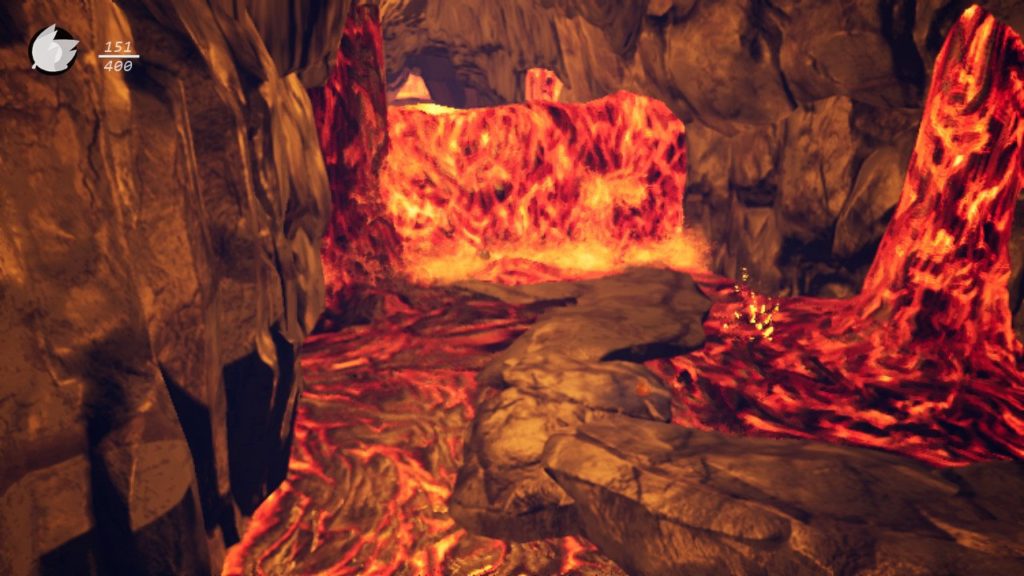
Puzzles are inconsistent in Skully too. Your mud forms will gain a new power, and then they will simply not use it for most of the game. Platform lifting is one of the more interesting powers and it’s only used a handful of times, even right after you get it. The challenge of puzzles is inconsistent too, with the majority being simple to solve and the occasional one being challenging due to weird lighting or requiring a creative use of multiple mud form skills. You can use three mud forms at once, but only be in one at a time, leading to some interesting creative possibilities that are completely underutilized.

Finally, there’s the plot. Skully features a thin plot about sibling rivalry and overcoming differences to come together as a family. As you play, Terry whines in your ear about all the drama and problems his family has gone through. His voice is nasal and irritating and you’ll be longing for an option to turn him off entirely within an hour at most. As you reach the other siblings, dialogue is stilted and awkward and the voice acting is just terrible. It’s obviously an attempt at comedy but it simply falls flat. The godlings sound like a bunch of spoiled, entitled brats that are stubborn and capricious. That does kind of fit with the behavior of various mythological deities, but it’s grating and pointless. The more they talk, the less attached you are to what’s happening, lessening the urgency to help Terry out and ultimately detracting from the game. It honestly sounds more like the script from a Real Housewives show than game dialogue.
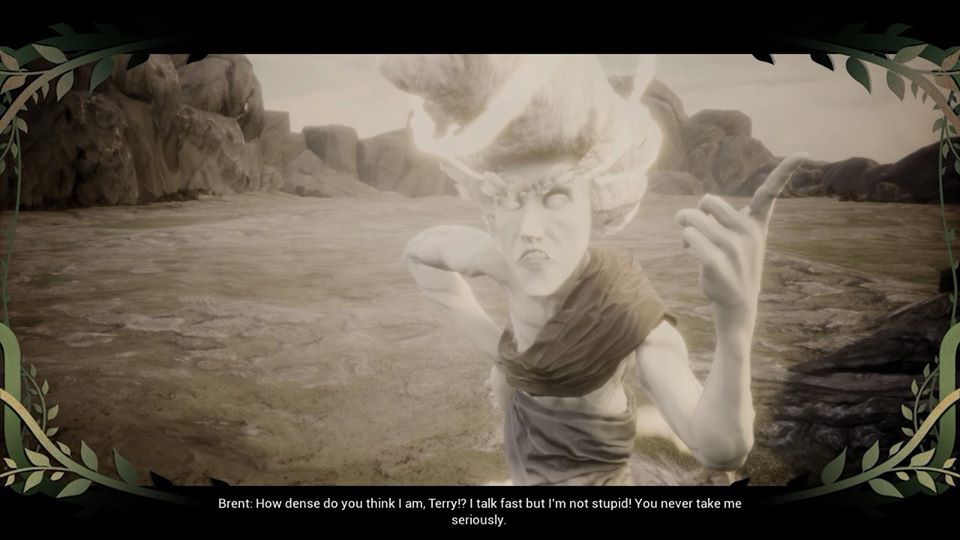
Skully is what you make of it. There’s a unique and incredibly challenging physics-based game hiding in the depths of this muddled mess. Unfortunately, it’s outrageously hard, lacks focus, and often times can be partially or entirely bypassed. The mud forms are fun to play and cool, but definitely poorly utilized. Even figuring out where to go can occasionally be troublesome, and the script is definitely a candidate for the round file. If you don’t hear a constant ringing in your ears from flower-collecting after playing Skully, consider yourself lucky. Theoretically, this is a game that you should be able to beat in a day, but the difficulty curve is incredibly high and will definitely frustrate some players. All in all, this is a game that has potential but squanders it in an unfocused delivery that tries to do too much rather than focusing on the best ideas and refining them. Add in the high price point and unless there’s a great sale or you’re absolutely obsessed with physics-based gameplay, Skully is better left unplayed.
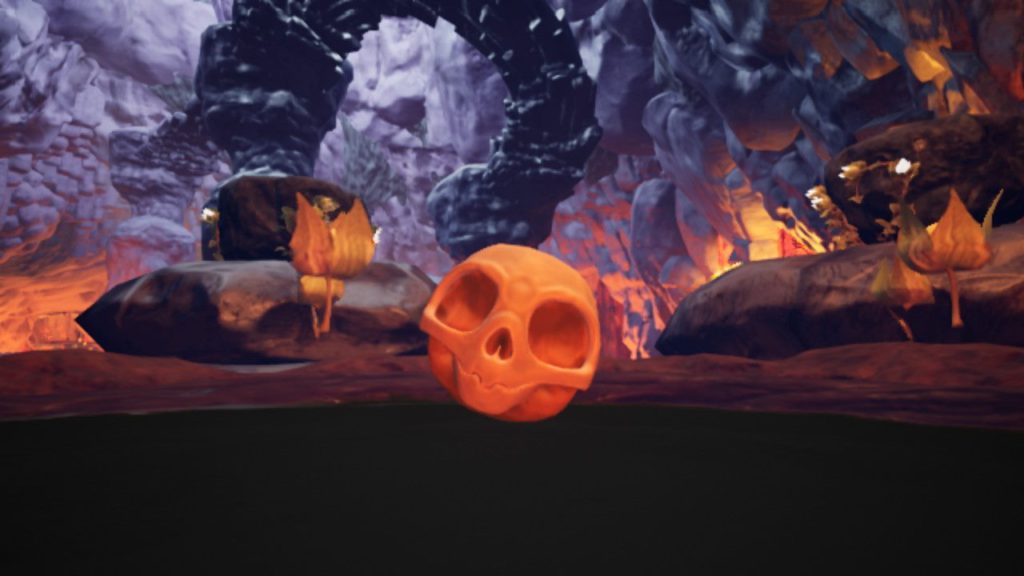
This review is based on a digital copy of Skully provided by the publisher. It was played on a Nintendo Switch in both docked and undocked modes. All screenshots are from actual gameplay. Skully is also available for PS4, Xbox One, and PC on Steam.

